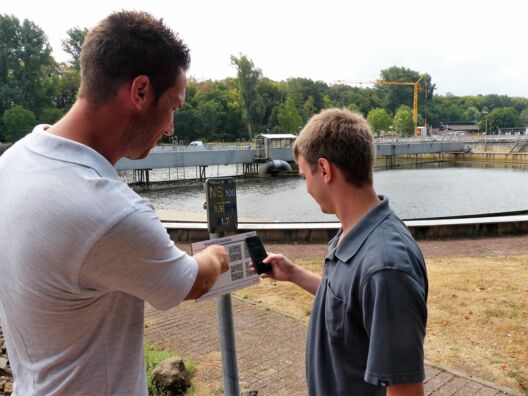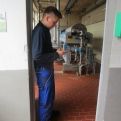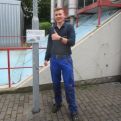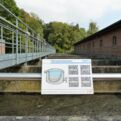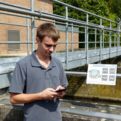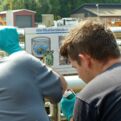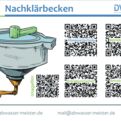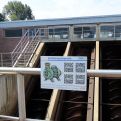f you don't have a QR code reader app on your smartphone yet, you can download it for free on the respective platforms (e. g. App Store or Play Store).
What is the "QR-Code Wastewater technology"?
The "QR-Code Wastewater technology" is far more than the name suggests. The 15 fixed signs with graphics and four QR codes installed on the wastewater treatment plant are the "visible part". The most common process stages of a wastewater treatment plant for wastewater and sludge treatment are presented on these signs.
The more exciting but "invisible" part is a complete Content Management System (CMS). This means that many digital pages are filled with content in various formats such as audio, video, graphics, key figures or quizzes, as well as free pages for your specific contents on operating technology, safety and malfunction.
The CMS is managed and hosted centrally by A-HA. Every authorised person, i. e. every customer of the QR-Code Wastewater technology, can access the pages that have been activated for him or via links. The QR code on the sign is nothing more than this link, which the smartphone recognizes, using one of the reader apps which are mostly available for free, and directs you to the appropriate page. Typing in links - time consuming and tedious - is no longer necessary.
Test operation successfully completed
The operating personnel of the sewage treatment plants in Cologne, Nuremberg, Wiesbaden and Bonn were able to intensively inspect the QR code wastewater technology with the training contents for three months. 80% of the respondents after the test operation gave a recommendation. In addition, there was a strong desire to store individualised information at the various stages of the process, such as help with finding solutions for various operational breakdowns or instructions for occupational safety. In the meantime, A-HA has taken this step and offers customizations according to the requirements of the wastewater treatment plant.
New customers include
- Cologne-Stammheim
- Cologne-Weiden
- Koblenz
- Grevesmühlen
- Bonn-Duisdorf
- Wasserverband Eifel-Rur
The origin of the QR code lies in training
According to a study by the US market research institute dscout, the' normal' owner of a smartphone has his or her mobile phone in his or her hands for about 145 minutes a day. The value would certainly be even higher for only younger users. Achim Höcherl sees this assessment confirmed in his professional life. His consequence: "We have to break new ground and design the training of our young talents in a" digital "way.
No sooner said than done. Achim Höcherl and Sven Theus put together a team of waste water, IT and graphics experts and produced a wide variety of contents around the process steps of waste water technology. The result was a digital wastewater treatment plant, which explains its working methods and structures to the trainees themselves
A feasibility study, financed and secured by the German Federal Environmental Foundation (DBU), should show whether it is possible to anchor information easily and without great effort in everyday working life, with the help of the QR codes on sewage treatment plants. It should be determined whether this type of training and further education option is accepted by the plant operators and accepted by the operating personnel. For this purpose, information had to be put into the context of the process stages of a wastewater treatment plant and an application that was easy to learn had to be created.
This has been achieved. It has been proven that the additional use of mobile learning contributes to a fast and effective learning process. In addition, the "media mix" awakens the desire to learn (motivation).
Suitable for international use
The concept can be translated into other languages at any time. The first English and Arabic test plates as well as the translation of the general information pages on wastewater technology have already been produced.
In addition to work abroad, implementation in Germany is also conceivable: management of foreign visitors of the sewage treatment plant or distribution of important information to employees without German as their first language.

